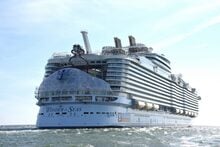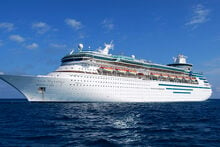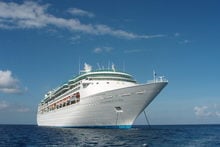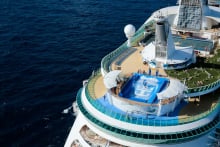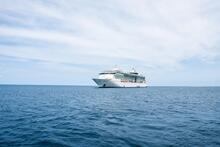Royal Caribbean operates the biggest cruise ships in the world, and a ship (if stood upright) that is twice as high as the Washington Monument might leave you wondering how it doesn't sink.
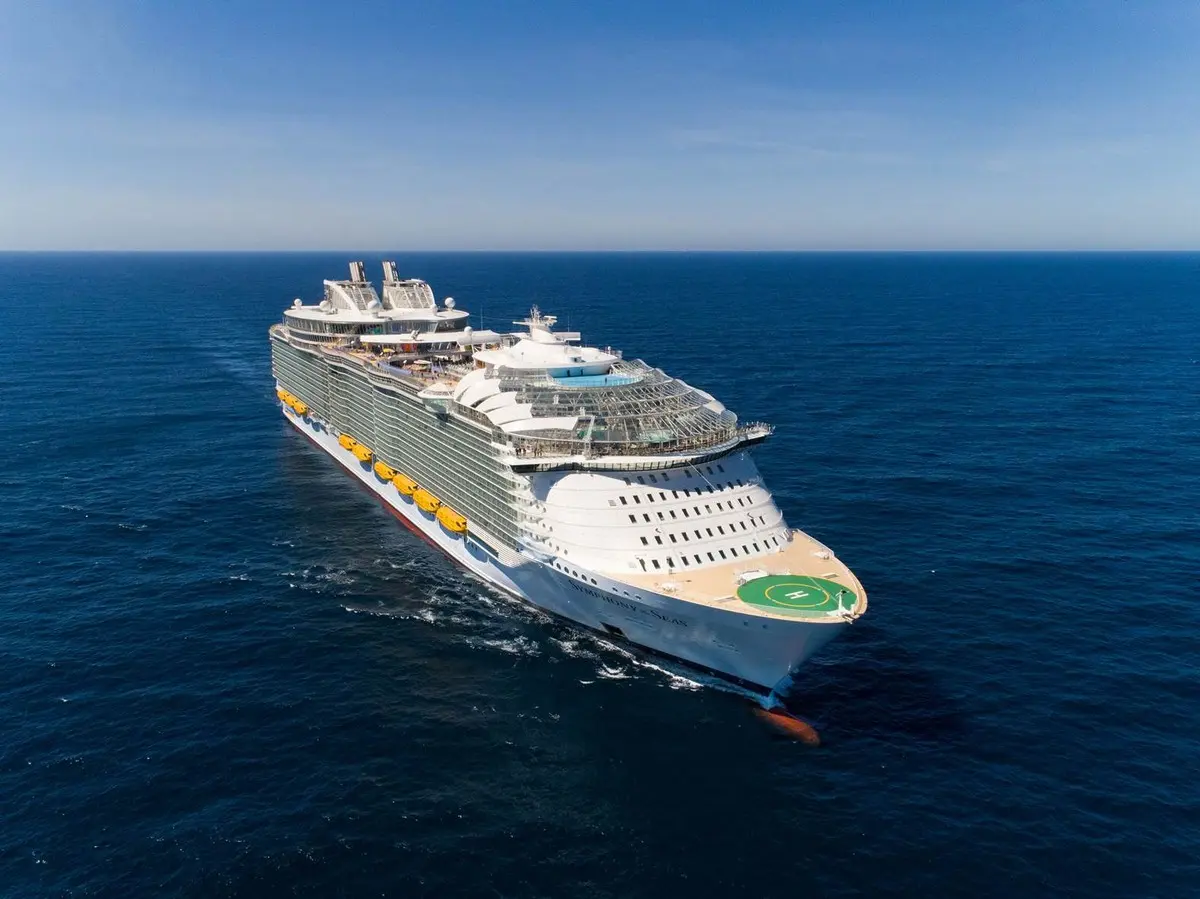
Symphony of the Seas has water slides, an ice skating rink, and an entire park. She can accommodate up to 6,680 guests and weighs 228,081 gross tons (GT).
Whether you have been on a cruise ship, or simply seen a photo of one, you might have wondered how such a big ship can float in the water.
How does a cruise ship float? And why doesn't it fall over when the wind blows?
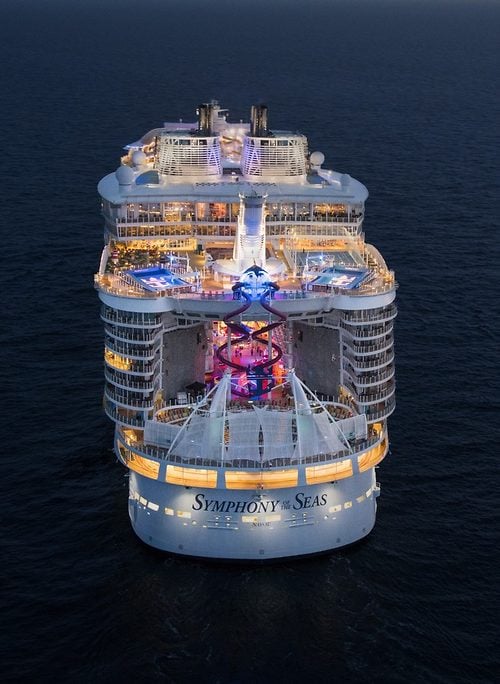
Royal Caribbean's cruise ships are amazing pieces of technology, maritime tradition, and innovation, but they are not magic. It is all about physics.
The concept of buoyancy is what keeps a cruise ship like Symphony of the Seas upright and floating.
The science of buoyancy was discovered by Archimedes in 246 BC, when he developed Archimedes' principle.
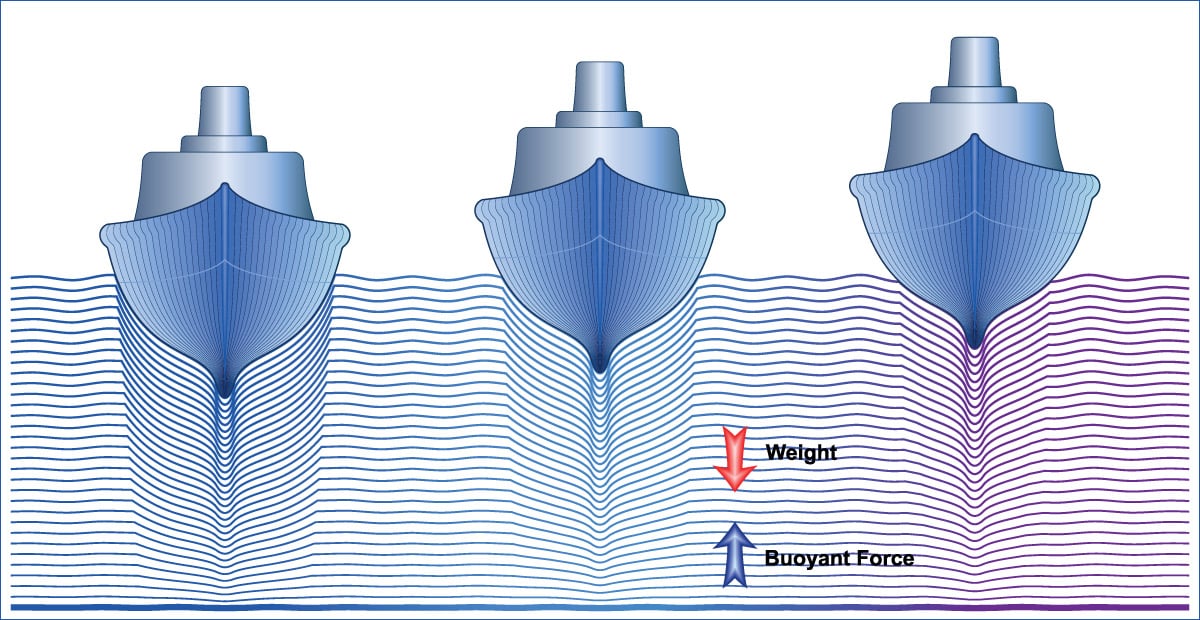
"Any object, totally or partially immersed in a fluid or liquid, is buoyed up by a force equal to the weight of the fluid displaced by the object."
Essentially, cruise ships can stay above the water as long as they are displacing an equal amount of water to their mass.
A cruise ship displaces an amount of water equivalent to its own mass. The pressure of the sea pushes up against the vessel’s hull to counter the downward force of the ship’s mass. Unlike air, water cannot be compressed, so the combined forces create buoyancy.
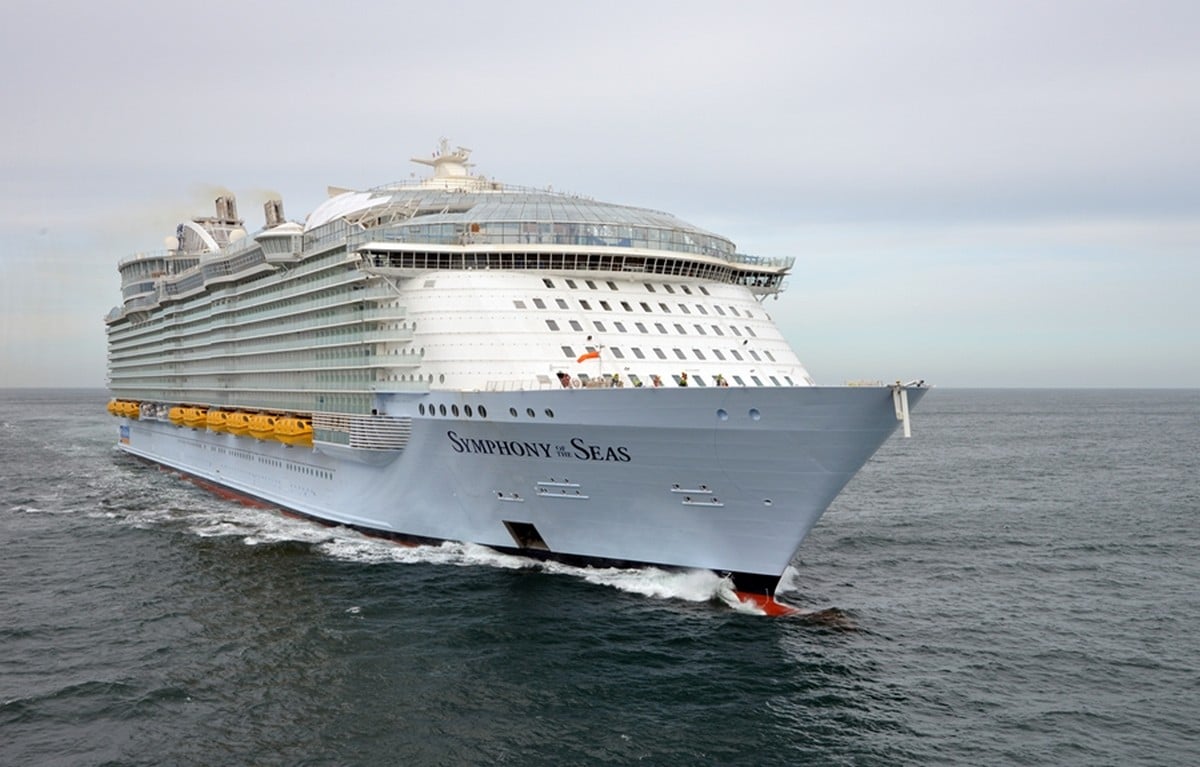
As the cruise ship moves forward, water is pushed away and that water tries its best to return to fill the displaced space and that energy forces the ship upward.
While the ship is indeed quite heavy, there is a lot of open space onboard and that empty volume means the ship is not like a giant rock in the water.
When a cruise ship is designed, engineers pay careful attention to keep the average density of the ship (considering both the physical weight of the vessel as well as all the air) less than the average density of the water.
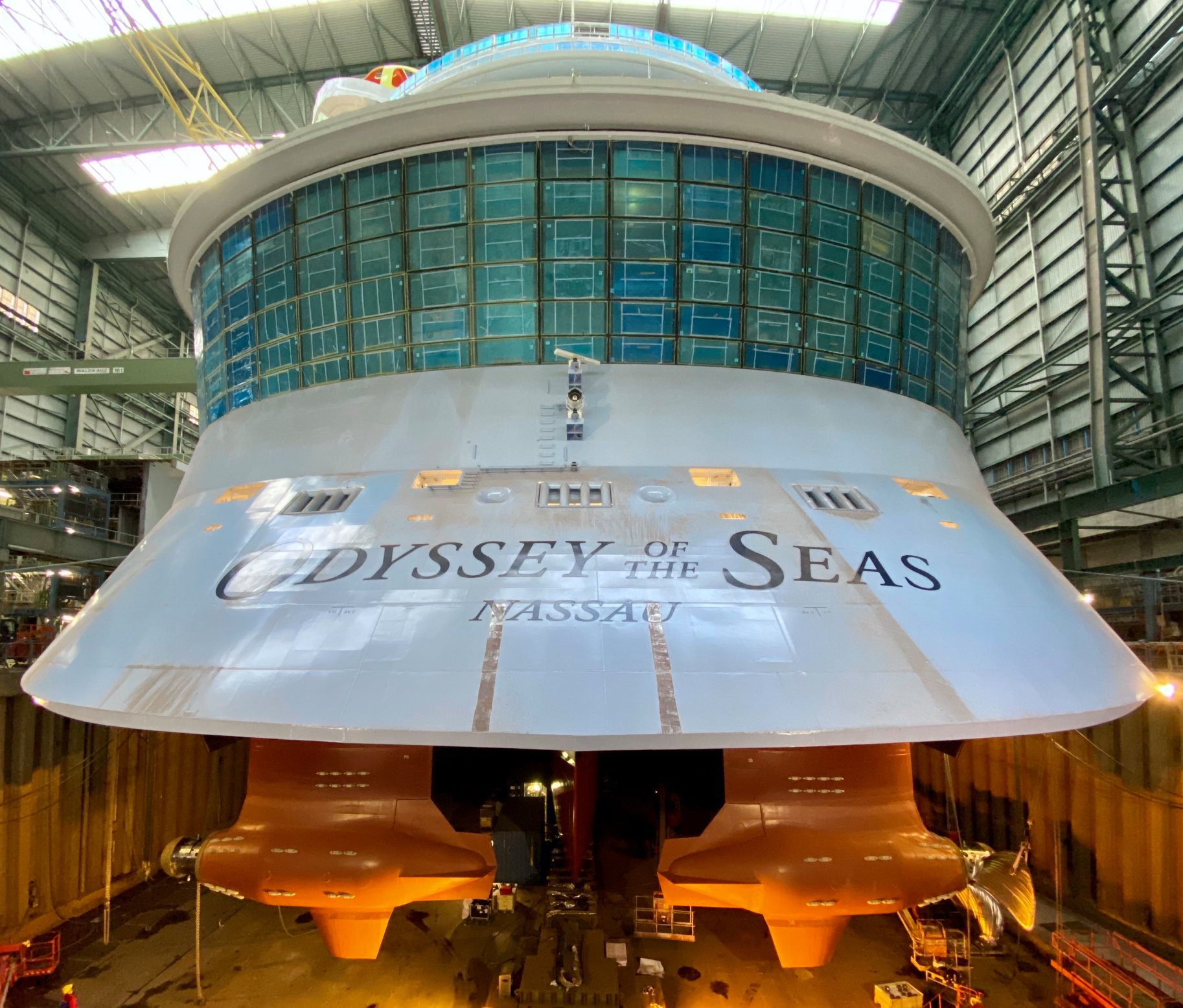
The ocean is vast and extremely dense. So if the cruise ship can have less of a density than the ocean, that it floats on the surface.
If you ever meet an engineer, they will often talk about a ship's displacement, rather than its weight. Ships float because they weigh less than the weight of the water they displace.
One other thing you might notice about a ship like Symphony of the Seas is her wide hull. That design choice is no accident.
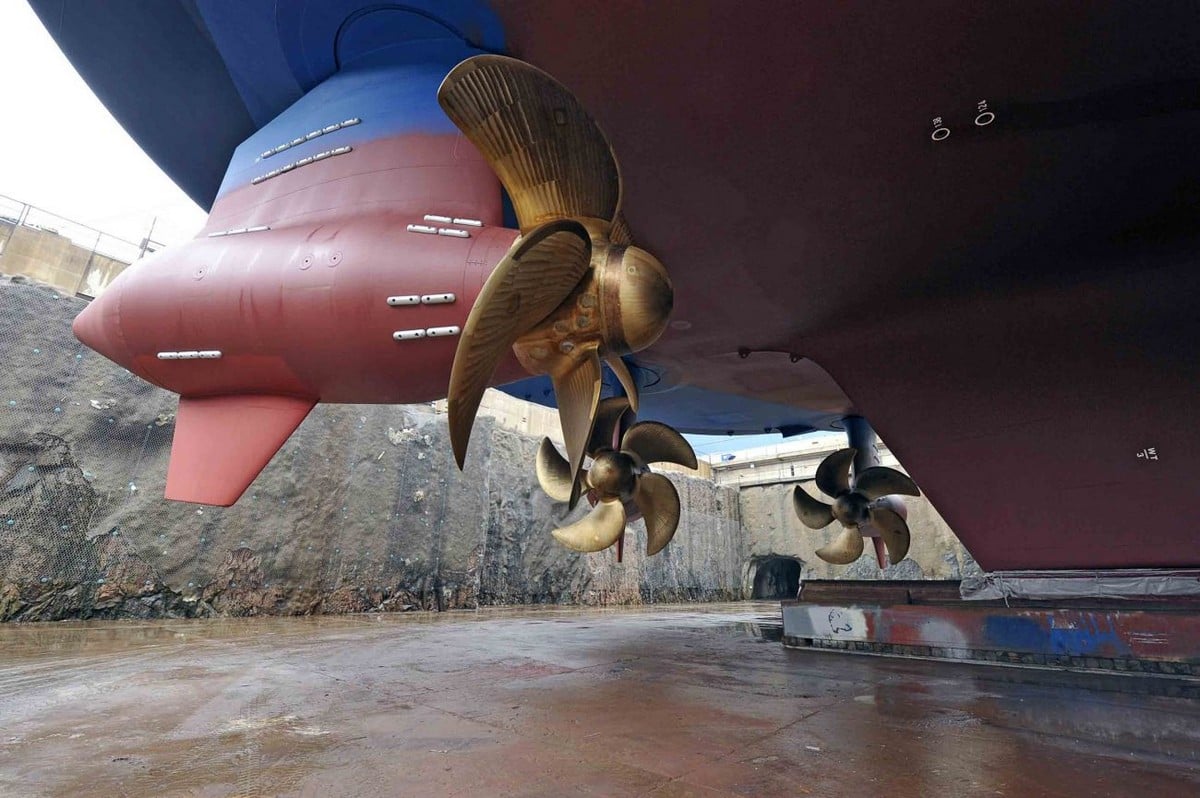
When Oasis Class ships were designed,the engineers chose a wide hull to disperse the weight across it.
Think of the hull as the body of the ship, and the part that is below the main deck is usually quite wide and has a deep bottom (known as a base line). Cruise ships (and other large vessels) usually have displacement hulls, or hulls that push water out of the way, to stay afloat.
Another major difference between a cruise ship and a boat is the design of the hull.
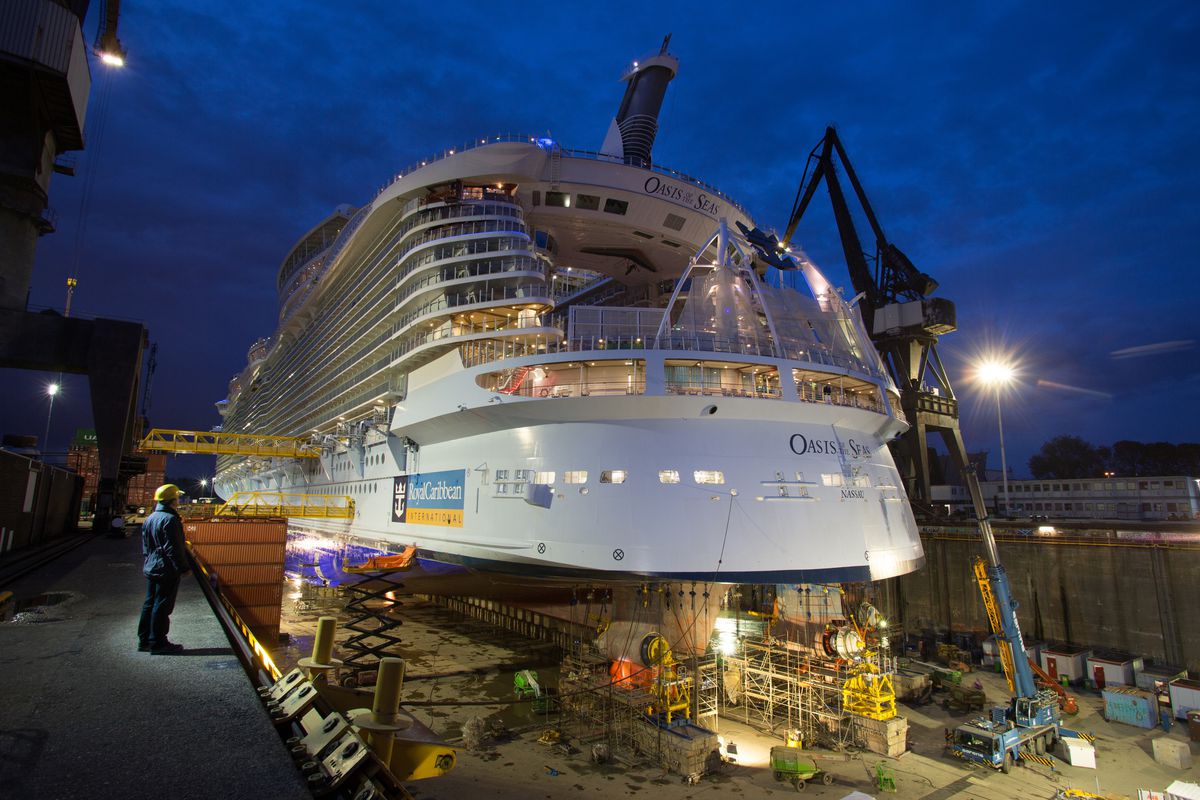
Boats have a "v-hull", which means if you took it out of the water and looked underneath, the bottom resembles the letter "v". Cruise ships have a hull that looks like the letter "u".
Round-bottom hulls move through the water and make them much more stable and seaworthy than a v-shaped boat hull. This is primarily why cruise ship passengers feel much less rocking or motion compared to a boat.
However, that stability comes at a price: speed. Boats move through the water much faster than cruise ships.
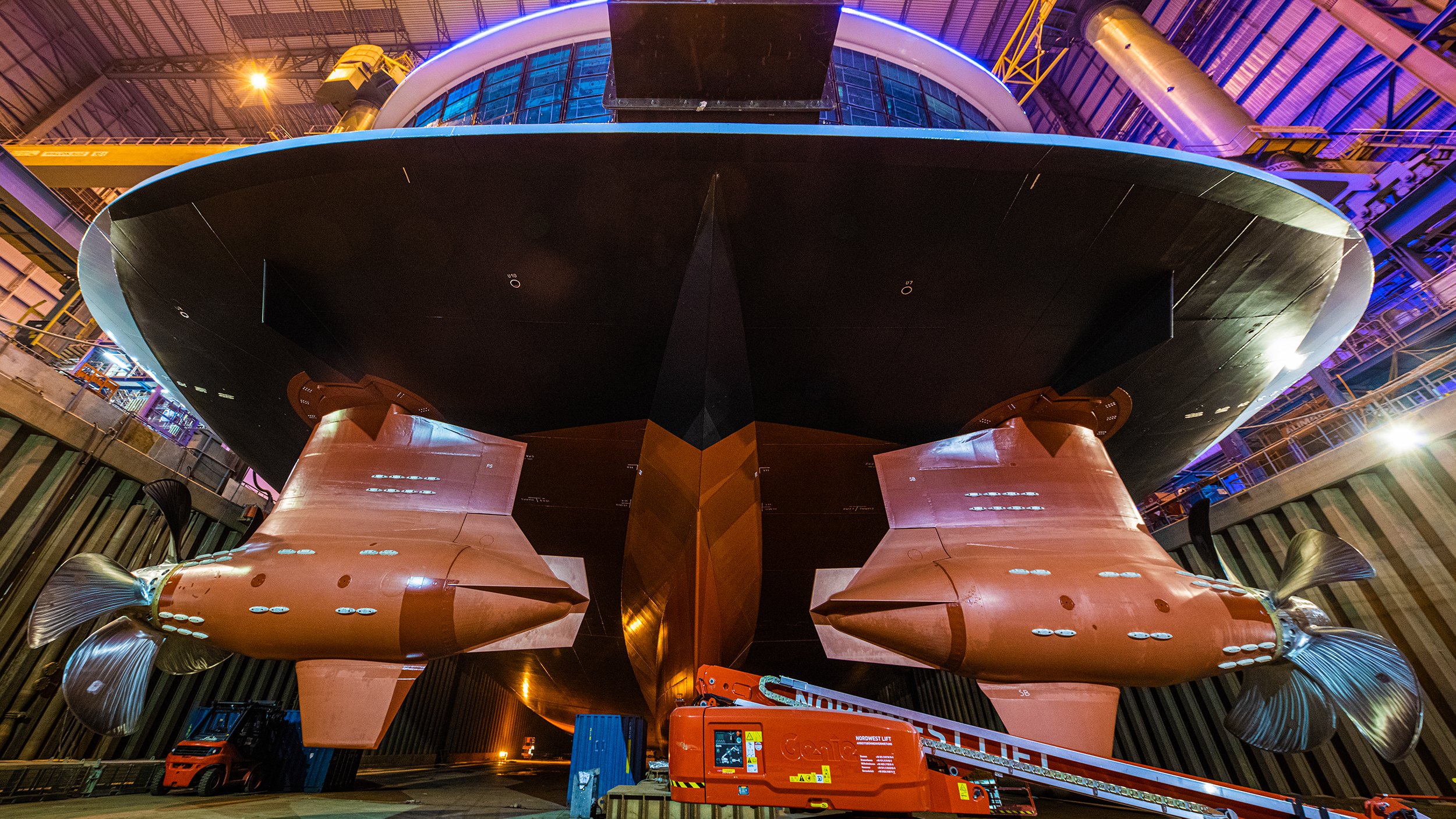
So with all of that said, I have not yet tackled how a cruise ship is going to float. Why is there only 30 feet below the water and over 200 feet above the water, and how do they keep the upside up?
It is a matter of weight distribution. The engines and other machinery, fuel tanks, water tanks, and ballast tanks are all low in the ship, while lighter, less dense spaces are up higher.
The wider hull helps a lot with stability. Symphony is nearly as wide as she is tall. That’s why a strong wind hitting the side of the ship doesn’t tip it over. This is calculated as a wind heel moment and is a large part of the stability calculations for any vessel.
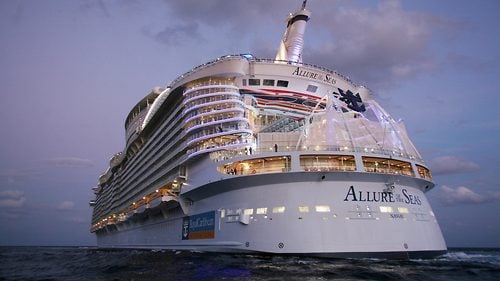
If Yoda had been an engineer, he might have said, "Size matters not. Judge me by my buoyancy do you."


